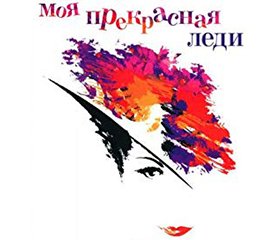Patrolling the Beaumont lobby before a matinee this past Wednesday, I heard a middle-aged couple speaking Russian. I grasped only one word of their conversation: “Shaw.” That touched a chord with me because of the reading I’ve been doing lately about the history of My Fair Lady.
Though Shaw, whose Pygmalion provides the bedrock for My Fair Lady, has been dead for more than 68 years, I was not surprised to hear Russians of 2019 utter his name. The connection between that couple’s country and the playwright is secure enough to last down the decades. When Shaw visited the Soviet Union in 1931, he was greeted in Moscow by an honor guard, emblazoned banners, and crowds crying, “Hail, Shaw!” Stalin himself granted Shaw a long private audience at which the writer pronounced the dictator in “charmingly good-humored” spirits.
Shaw’s support for Stalin did not yield to the events of the Great Purge or the Ukrainian famine or the pact between Stalin and Hitler. That third seeming abomination was redeemed in Shaw’s eyes by the undeniable fact that, once Stalin switched sides, the Red Army provided the decisive force in the pact between Britain, the U.S., and the Soviet Union to defeat Germany.
Listening to that Beaumont-lobby couple speak Russian, I suddenly realized that the Shaw-Stalin alliance helped explain why, when My Fair Lady was lighting up Broadway in the late 1950s, the Soviets were so keen to have Lerner and Loewe’s show come to Moscow, Leningrad, and Kiev. Broadway musicals had rarely been politically progressive enough or musically serious enough to invite Soviet interest. True, in 1956 an American company had toured major Russian cities with Porgy and Bess (a trip memorably chronicled by Truman Capote in “The Muses Are Heard”). But the Gershwin creation seemed an outlier: as much an opportunity for the Soviets to remind the world of the contradiction between Americans’ proclamation of freedom and equality and our country’s ongoing racial segregation as to showcase a work of American musical-theater genius.
According to Dominic McHugh, in his valuable Loverly: The Life & Times of 'My Fair Lady', when Nikolai N. Danilov, Soviet Deputy Minister of Culture, in 1959, issued an invitation to bring the Broadway production of My Fair Lady to Russia, it was “part of an ongoing series of Soviet-American cultural exchanges designed to foster better relations between the two nations during a difficult period of the Cold War.” But, like most Soviet officials who had come up during Stalin’s reign, Danilov was keenly aware of Stalin’s cultural preferences, including for Shaw. Such knowledge was residue that had not been completely washed away by the post-Stalin era that Khruschev, chief Soviet leader from 1953 to 1964, had ushered in.
Success for the Russian tour of My Fair Lady was not a given. The Broadway production was complex. Fitting it into very different theaters of Moscow, Leningrad, and Kiev was daunting. The task seemed initially insuperable to Samuel Liff, the production supervisor, and Jerry Adler, the stage manager. (Fun fact: Adler is in his 90s and still alive and, as it happens, lives two floors above me in my Upper West Side apartment building.)
The attempts of Liff and Adler to fit the Broadway production into the Central Theatre of the Soviet Army, where My Fair Lady played in Moscow, was chronicled in the April 3, 1960 edition of The New York Times, by Max Frankel. “The trouble,” Frankel wrote, “was not the size of the [Moscow] stage but the elaborate and permanent fixtures, the ramps, bridges and beams weighing tons that would have to…be ripped out for Higgins’ study and Eliza’s slum.”
The adjustments were managed and, as Osgood Caruthers reported in the April 23, 1960 edition of The New York Times, the reception by Russian audiences to My Fair Lady was “nothing short of fabulous.” The company, however, had to wait six days after the Moscow premiere for a review to appear. The newspaper Soviet Culture positively raved. Caruthers noted: “Although there has been warm praise for American performers in the past, this is perhaps one of the warmest ever to have appeared in the Soviet press. And it is a rare thing indeed to read Soviet comment on American art containing not a single ‘but.’”
Almost 60 years later, audiences still come out of My Fair Lady with “but” at least temporarily removed from their vocabulary.
Brendan Lemon is the editor of lemonwade.com
